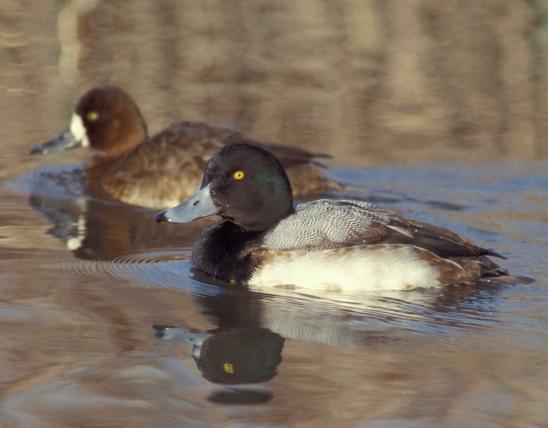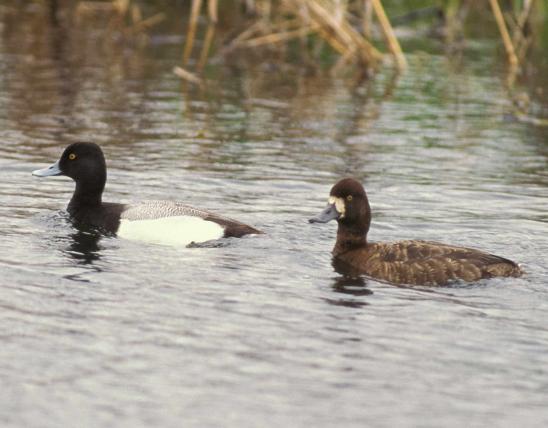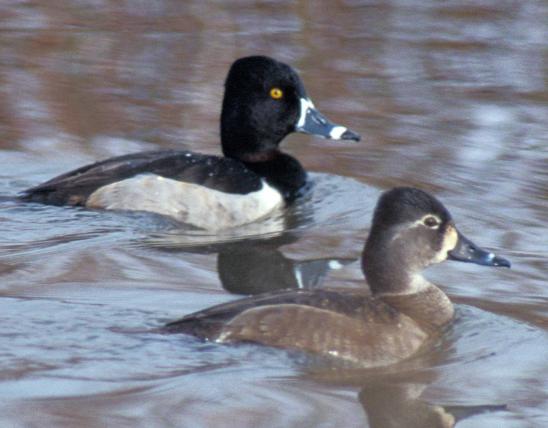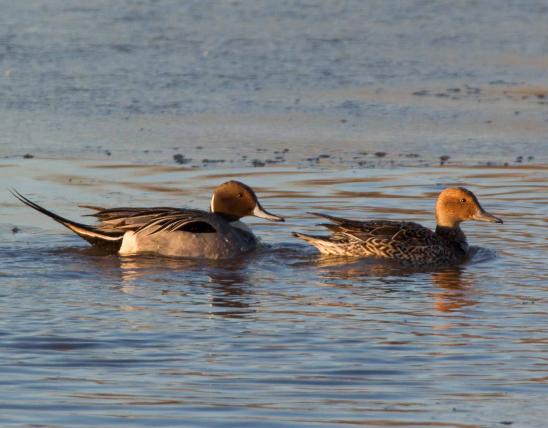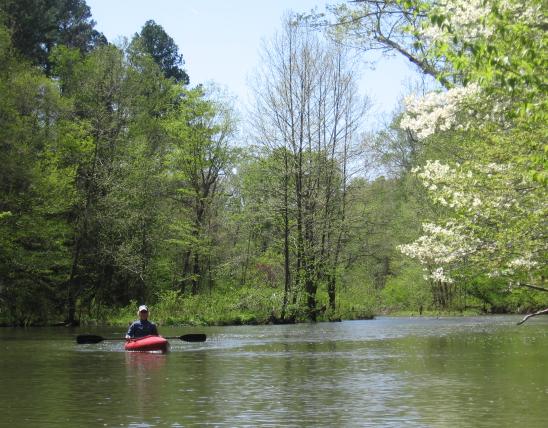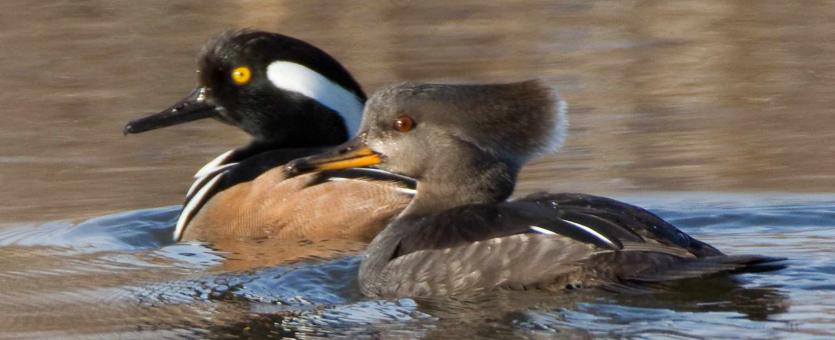
The adult hooded merganser male has black head, neck, and back; the black-margined white crest and chestnut flanks of the male are very distinct. Female is brown with a rust-colored crest. The bill is slim, serrated, with a hooked tip; bill is dark in male and bicolored in female. Male gives a low, froglike sound; female a hoarse “gak.” Mergansers are divers, and the legs are far back on the body; on land, the posture is upright. The head crest may be raised to a nearly circular shape or lowered so that it trails behind the head. Hooded mergansers can leap straight out of the water and is our only merganser that can do so.
Similar species: Common and red-breasted mergansers don’t breed in Missouri and are only seen as migrants and as winter residents. The males of both have green heads and red bills; red-breasted males have a dark chest and ragged crest; common merganser males have a white chest and lack a crest. The females of both have rusty heads and gray bodies.
Length: 18 inches (tip of bill to tip of tail).
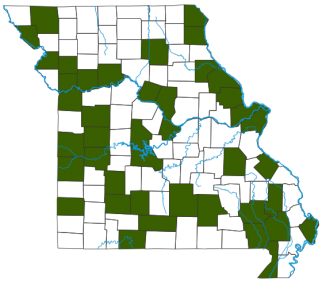
Statewide.
Habitat and Conservation
Usually seen foraging on rivers, in large streams, and in wooded areas on lakes. It nests in tree cavities on river oxbows, in wooded areas near or over marshes, and in swamps. In winter, usually seen mainly in southern Missouri.
Food
Forages on rivers, in large streams, and in wooded areas on lakes for fish, frogs, and aquatic invertebrates. Hooded mergansers hunt by sight and dive completely underwater to snag their prey. The serrated bill helps them grab slippery fish.
Status
Uncommon transient; rare summer and winter resident (uncommon in southeast).
Life Cycle
The hooded merganser regularly breeds in our state. Like wood ducks, they nest in tree cavities and require standing dead trees for this purpose. They also use specially made nest boxes, which you can build using MDC plans. Clutches are 5-13, though females sometimes lay eggs in each others’ nests, increasing the number of eggs in a nest. Incubation lasts 26-41 days. The downy chicks leap from the nest to the forest floor the day after hatching.
Human Connections
Habitat destruction and overhunting caused populations to decline in the early 20th century, but populations seem stable now. Human-caused habitat disturbance continues to displace mergansers, but landowners putting up nest boxes and allowing dead trees to stand helps keep their numbers healthy.
Ecosystem Connections
The hooded merganser, being a species of forest and water habitats, relies on the health of both. Successful nesting requires mature forests complete with dead cavity trees, and successful foraging requires waters that are not overburdened by sediment.
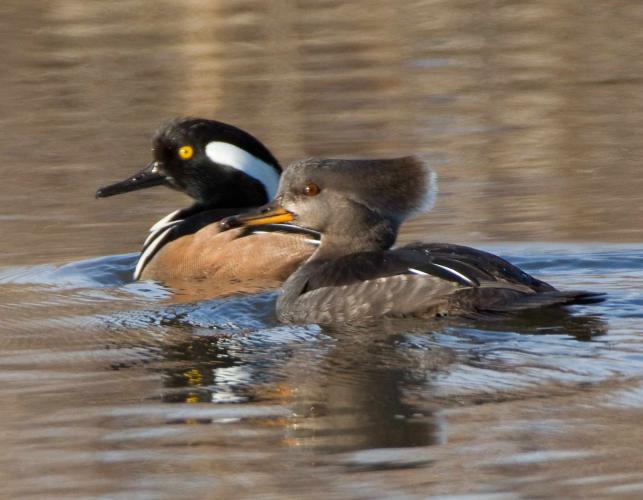

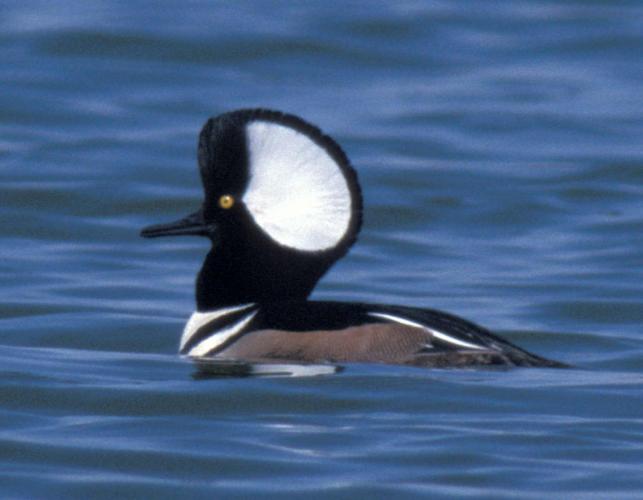

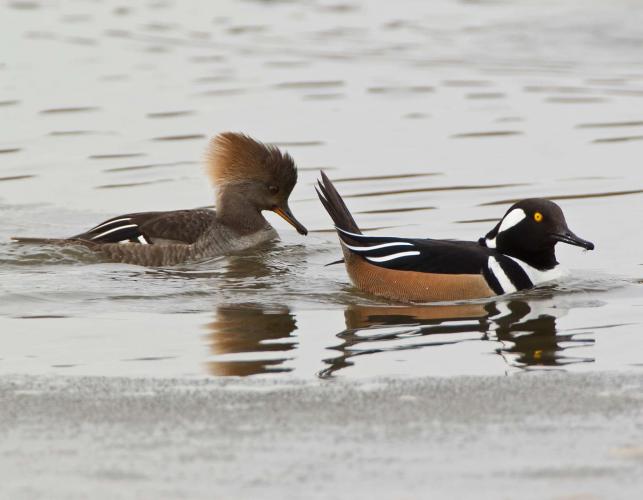

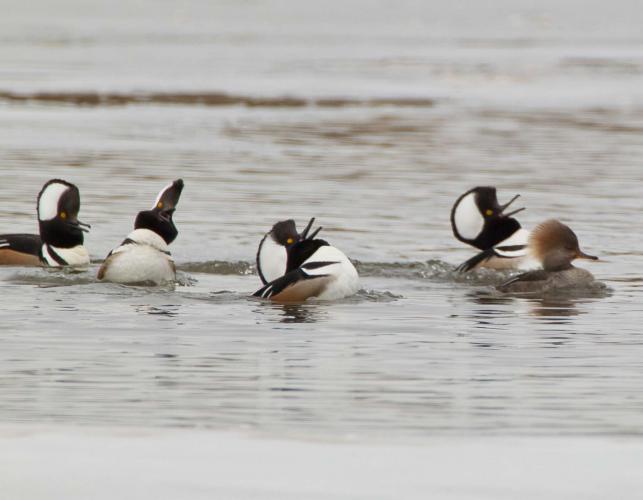
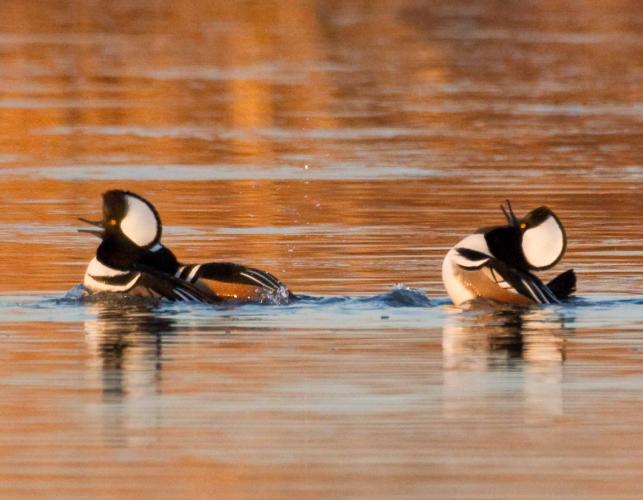
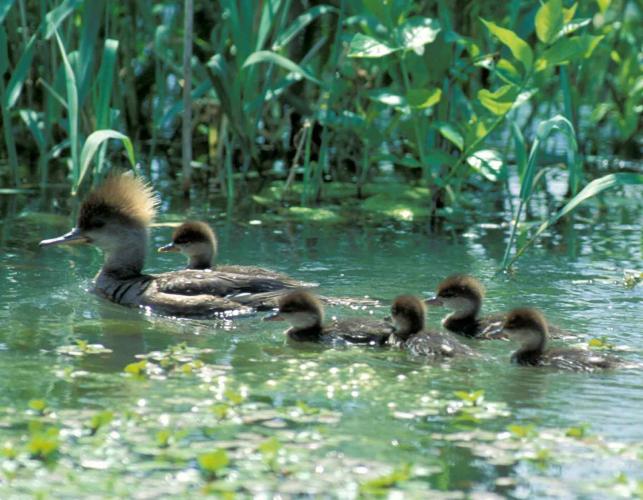
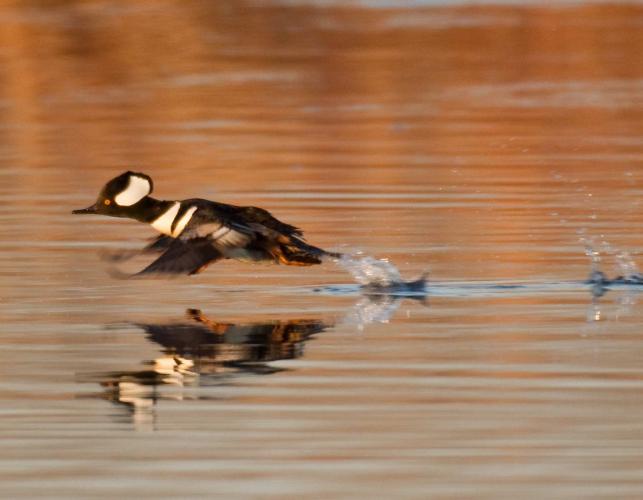

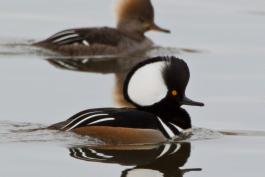

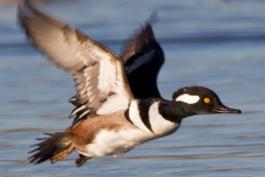

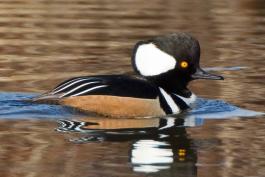

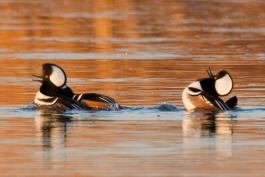

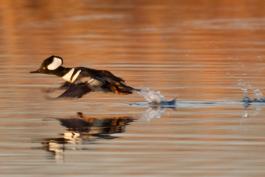
Where to See Species
About 350 species of birds are likely to be seen in Missouri, though nearly 400 have been recorded within our borders. Most people know a bird when they see one — it has feathers, wings, and a bill. Birds are warm-blooded, and most species can fly. Many migrate hundreds or thousands of miles. Birds lay hard-shelled eggs (often in a nest), and the parents care for the young. Many communicate with songs and calls.























